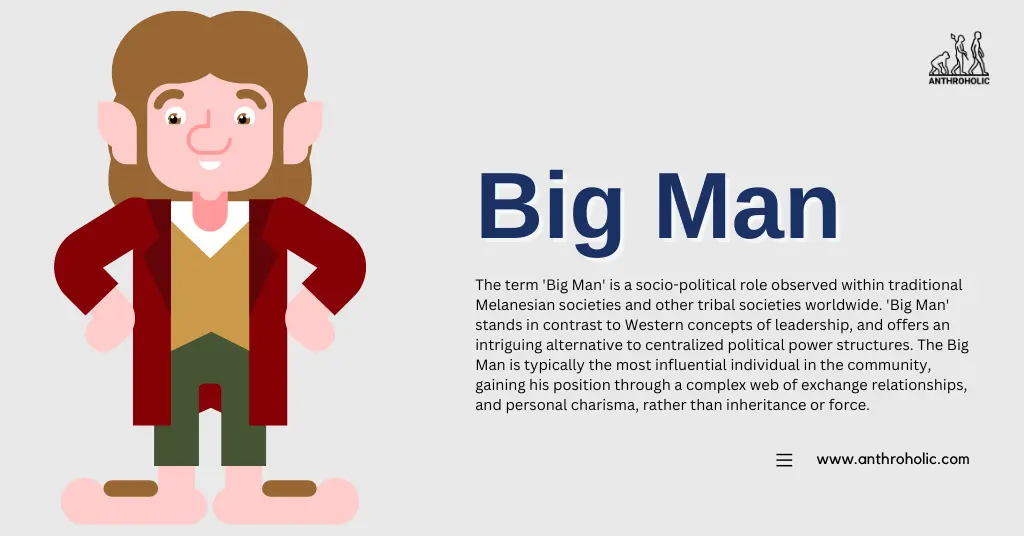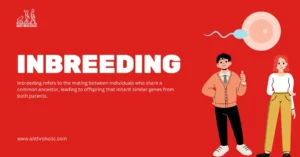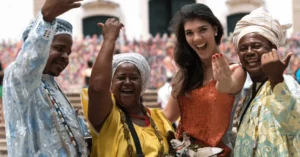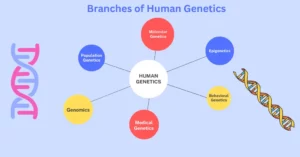AI Answer Evaluation Platform Live Now. Try Free Answer Evaluation Now
Big Man
The term ‘Big Man’ is a socio-political role observed within traditional Melanesian societies and other tribal societies worldwide. ‘Big Man’ stands in contrast to Western concepts of leadership, and offers an intriguing alternative to centralized political power structures. The Big Man is typically the most influential individual in the community, gaining his position through a complex web of exchange relationships, and personal charisma, rather than inheritance or force [1].

The Emergence of the Big Man
The ‘Big Man’ social structure typically arises in societies characterized by their relative simplicity in terms of technology, and lack of social stratification. Here, leadership is neither guaranteed by birthright nor maintained through coercion. Instead, the ‘Big Man’ ascends to his position of influence and authority through reciprocity and the redistribution of wealth [2].
Characteristics of the Big Man
- Wealth Redistribution: The Big Man is often a wealthy individual who amasses wealth to redistribute to others within the society. This act of redistribution is critical to their popularity and influence.
- Reciprocity: The Big Man maintains his position through the reciprocal exchange of goods and services. By providing for his community, the Big Man builds a network of obligations and debts that further secure his status.
- Charisma and Personal Ability: Unlike hereditary chiefs, the Big Man gains his position through personal ability. Their charisma, negotiation skills, and ability to build and maintain relationships are vital.
The Role of the Big Man
| Role | Explanation |
|---|---|
| Leadership | The Big Man serves as a leader, guiding the community through difficult times and conflicts. |
| Wealth Distribution | The Big Man acquires wealth to distribute it among the society, supporting community welfare. |
| Mediator | The Big Man acts as a mediator, resolving disputes within the community to ensure social harmony. |
The Big Man in Modern Context
In modern anthropological discourse, there are debates regarding the relevance and application of the ‘Big Man’ concept. Some argue that the term, originally rooted in traditional Melanesian societies, may be an oversimplification when applied to other complex societies. Others, however, see the Big Man as a timeless figure that represents a decentralized form of leadership, relying on personal charisma, generosity, and the establishment of reciprocal relationships.
Challenges to the Big Man System
Despite the advantages, the Big Man system isn’t without its challenges:
- Sustainability: The Big Man’s position relies on his ability to continually redistribute wealth, raising questions about the system’s sustainability in times of scarcity.
- Conflict: Given that leadership is not fixed, disputes may arise between rival Big Men, leading to social unrest.
- Equality: Despite an appearance of equality, critics argue that the Big Man system reinforces socio-economic disparities within the community.
Conclusion
In conclusion, the Big Man offers an alternative perspective on leadership, where influence is derived from personal ability, charisma, and the redistribution of wealth, rather than through inheritance or force. It’s a unique socio-political structure that showcases the diversity of human social organization.
References
[1] Sahlins, M. (1963). Poor man, rich man, big man, chief: political types in Melanesia and Polynesia. Comparative Studies in Society and History.
[2] Godelier, M. (1986). The Making of Great Men. Cambridge University Press.




